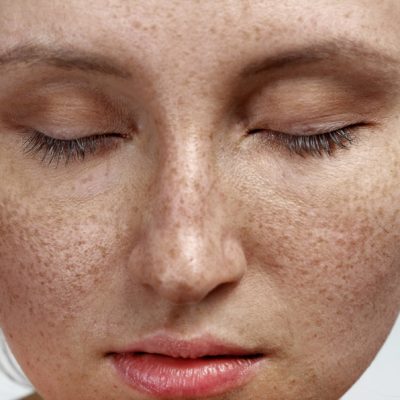
Skin Discoloration
Types of skin discoloration include sunspots, age spots, hormonal melasma, and post-inflammatory hyperpigmentation. Skin discoloration is often caused by heat and sun exposure, skin inflammation, pregnancy or hormonal fluctuations, and other medical conditions.
Your skin can change color for a variety of reasons. Health conditions can cause hypopigmentation or hyperpigmentation and skin discoloration and affect different areas of the skin. It can also be a natural part of aging or the signs of an underlying condition.
An example of intense skin discoloration is melasma. Melasma presents with uneven, dark, and blotchy skin in the areas of your face exposed to sunlight. The condition is not life-threatening, but it can not be easy to have. It happens when your skin has too much melanin and can affect people with darker skin tones, women during pregnancy, and those taking certain medications.
Dermatitis is a skin discoloration condition that is a non-dangerous irritation. Eczema, a form of dermatitis caused by dry skin, dysfunction of the immune system, skin infections, or contact allergens. Dermatitis is annoying and often disturbing.
Another skin discoloration problem is rosacea, and rosacea is common in those with fair skin. Rosacea flares up any time and can cause frequent redness and visible blood vessels on the face. You may also experience acne, dry and irritated skin, and a swollen nose.
Any of these problems with skin discoloration needs to be taken care of, and they can be eliminated with several different treatments.
Skin discoloration is a common skin condition and affects all skin types. Skin pigment treatment recommendations are:
- Chemical peels are used to melt away the top layer of skin and decrease the sign of fine lines, wrinkles, discoloration, and pores. Using a chemical peel, the damaged outer layers of your skin are removed, improving the skin’s appearance and texture.
- Microneedling is often used to improve texture, diminish the look of discoloration, and reduce scarring. The delicate skin around the eyes can be treated with microneedling. Microneeding also works well on skin areas such as acne scars, dark spots, and discoloration caused by skin diseases.
- Medical-grade Skincare infused with discoloration targeting ingredients helps reduce the appearance of uneven tone, including hyperpigmentation, melasma, acne, and age spots without irritation or damage.
FAQ
Microneedling reduces hyperpigmentation by breaking up pigment below the skin surface. This treatment or collagen induction therapy easily treats the skin without removing or damaging the epidermis.
The best place to purchase medical-grade products formulated to help with discoloration can be purchased in a pharmacy or at your medical spa.
It is interesting to note that some facial cosmetics with volatile oils, aniline dyes, and perfumes can cause discoloration. Aging and overexposure to the sun cause discoloration like dark spots.
Skin discoloration is not usually painful. It is annoying and can be irritated, but generally, it is not painful.


